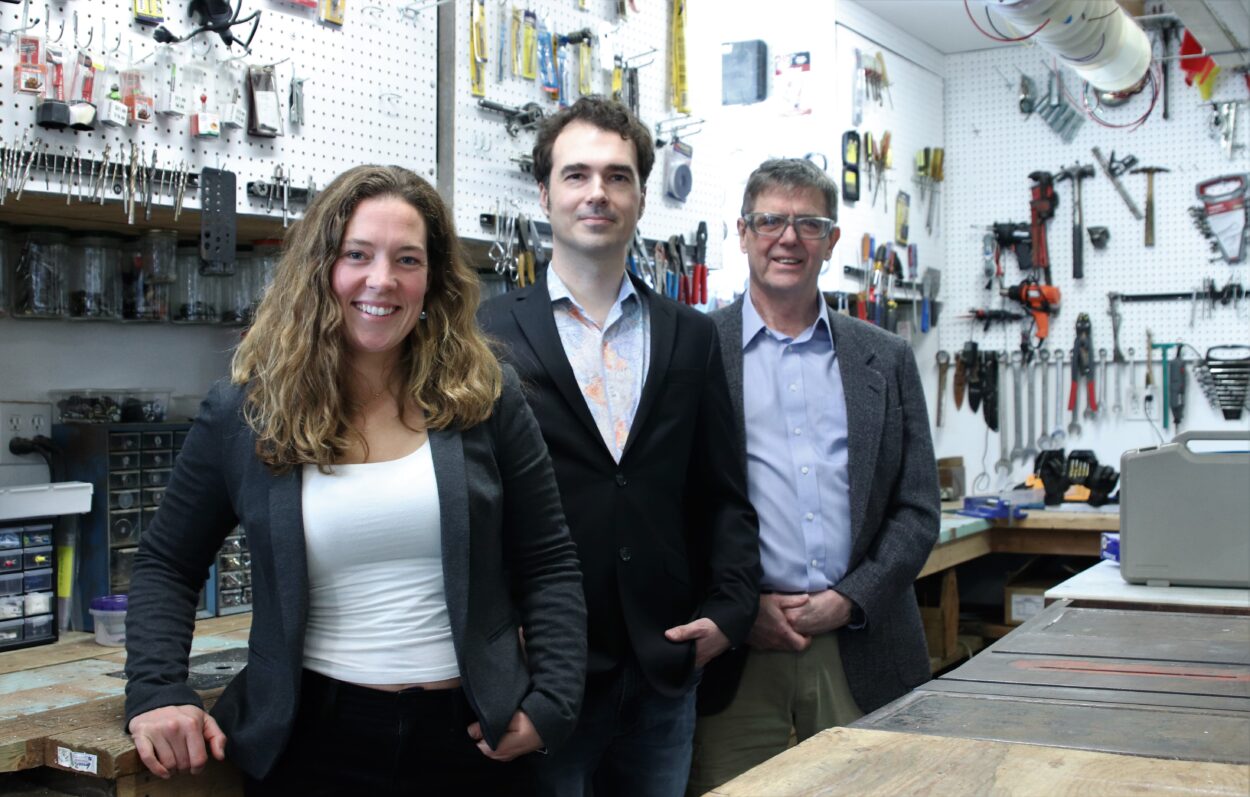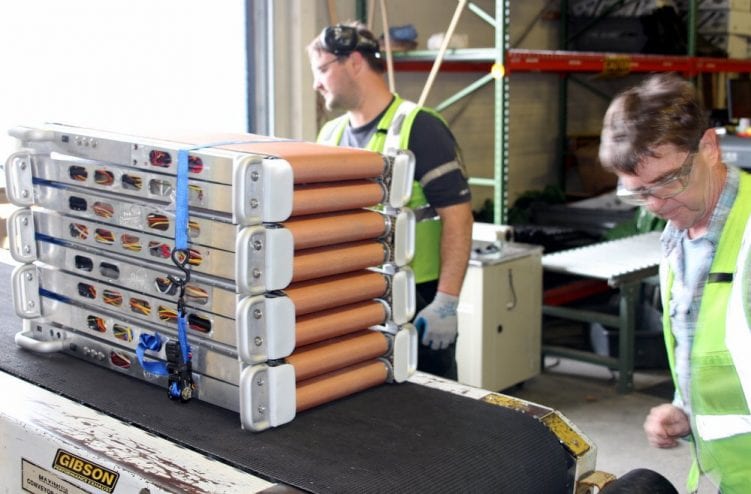
An aviation industry entrepreneur is poised to become a manufacturer, as air travel returns to pre-pandemic levels – and he’d like to do it in his hometown of Sitka.
Tim Fulton has designed a piece of equipment to make loading and unloading luggage and cargo more efficient – and dramatically safer – for the workers inside aircraft. The pandemic bought him the time to not only work out the kinks in the product, but to secure patents and distribution agreements all over the world.
I’m back in Tim Fulton’s garage in Sitka where I first interviewed him over three years ago. Actually, it’s a machine shop, Fulton’s “research and development center.” But instead of oil-stained Carhartt’s, Fulton is wearing a button-down shirt and a tweed jacket. He’s spent a lot of time recently on tour.
“We have the one in Fort Lauderdale,” Fulton said, listing where his product is currently being demonstrated. “I’ll be going back to Fort Lauderdale next week and doing a test down there. And then that one will come back and go to King Salmon, Fairbanks, and then to Paris.”
That would be Paris, France — not Texas. Fulton’s also been to Singapore and Mexico City, as well as to San Diego. Besides globetrotting, Fulton has brought aboard staff. This interview was scheduled by his executive assistant, Maury Hackett, and joining us for a photo is…
“I’m Charlie Petrie. I’m Head of Product Development with Ramper.”
Clearly, Tim Fulton did not spend the two years of the pandemic watching Netflix. Instead, he’s been perfecting his product, called TISABAS, hustling it at aviation industry shows, and cutting deals with potential distributors. TISABAS is a sort-of acronym for Tim Saves Backs. But don’t worry about remembering the name TISABAS, because you’ll never buy one. It’s for a niche in the ground service industry that most of us never give a second thought to: handling luggage in the belly of a passenger plane.
“Forward bending is challenging on the spine,” said physical therapist Eric Speck, whom I consulted on the TISABAS story three years ago. “Twisting is challenging on the spine, and lifting is challenging on the spine. When you combine all three together, it’s the perfect storm of forces for the low back.”
So much has changed about flying in recent decades: Improved navigation, quieter engines, beautiful airports, on-board wifi – but in the luggage bin it’s still 1955. As passengers board and buckle in, workers are just below in a space about three feet high, on their knees pushing, sliding, and yes – throwing – your bags down the length of the luggage compartment.
Tim Fulton’s got a bad back. In 38 years of loading planes, he says he’s known only one colleague who doesn’t. His desire to fix this has an evangelical undertone, not unlike a certain billionaire hoping to build a city on Mars.
“It’s not that far of a reach,” said Fulton. “What we’re doing is not rocket science. We can produce with this. We just need a little bigger equipment and a place to do it, of course, and manpower to put it together.”

TISABAS is a conveyor belt. But it collapses to the size of a large suitcase. It loads onto an airplane with the luggage. At the door, the baggage handler unfolds it like an accordion, and it conveys the bags to the far end of the compartment where another handler stacks them. No pushing, sliding, or throwing needed. As the compartment slowly fills, TISABAS is folded up a few feet at a time. When the luggage compartment is full, TISABAS is put back in its portable shape, and taken off the plane.
It’s the same process, in reverse, to unload an aircraft.
There are three TISABAS’s out in the world. One is owned by AeroMexico, who’s CEO used to be a “ramper” and loved the product immediately, and another is being demonstrated there. A third is being demonstrated in Florida. TISABAS is patented, and Fulton’s made distribution agreements with ground service companies from Norway to India to Mexico. He’s also struck a deal to have TISABAS built in China, exclusively for that country’s airlines.
All this, plus the official nod from aircraft manufacturers Boeing and Airbus for use of TISABAS in their aircraft is worth something – actually, it’s worth quite a lot. Tim Fulton hasn’t built many TISABAS’s yet, but he’s built a substantial enterprise, valued at over $2.5 million. It all began with $115,000 in seed money from the Alaska Angel Conference and additional private investment totalling $250,000. Now, Ramper Innovations is launching a second capital campaign aimed at local investors.
Executive assistant Maury Hackett says this reflects Fulton’s grassroots approach to the project.
“Part of the reason that we chose to go with crowdfunding rather than going to venture capitalists who had expressed interest was so that the local people in Sitka and Tim’s greater community and and other people who are on the ground have the opportunity to invest in a in a business like this, prior to it becoming much larger, and being out of out of financial reach for other people,” she said.
The latest crowdfunding campaign has a $500,000 goal. The funding will allow Fulton to move to another site in Sitka, and scale up the manufacture of TISABAS beyond the five per month he could build right now in his own shop.
And he hasn’t ruled out that TISABAS could take off, so to speak.
“We do have some backup,” Fulton said. “If American Airlines comes to us and says ‘I need 100 of these in six months,’ we have the capacity that we can ramp up to to meet an order like that.”
That will take money, of course, which Fulton believes he can find locally, and determination, which he’s never had in short supply.
“Right now it’s a marathon or maybe an ultra miler that we’re in,” said Fulton. “It’s not a sprint. So we’re putting things together where it’s a solid foundation for a business. And just moving forward as we can.”






























